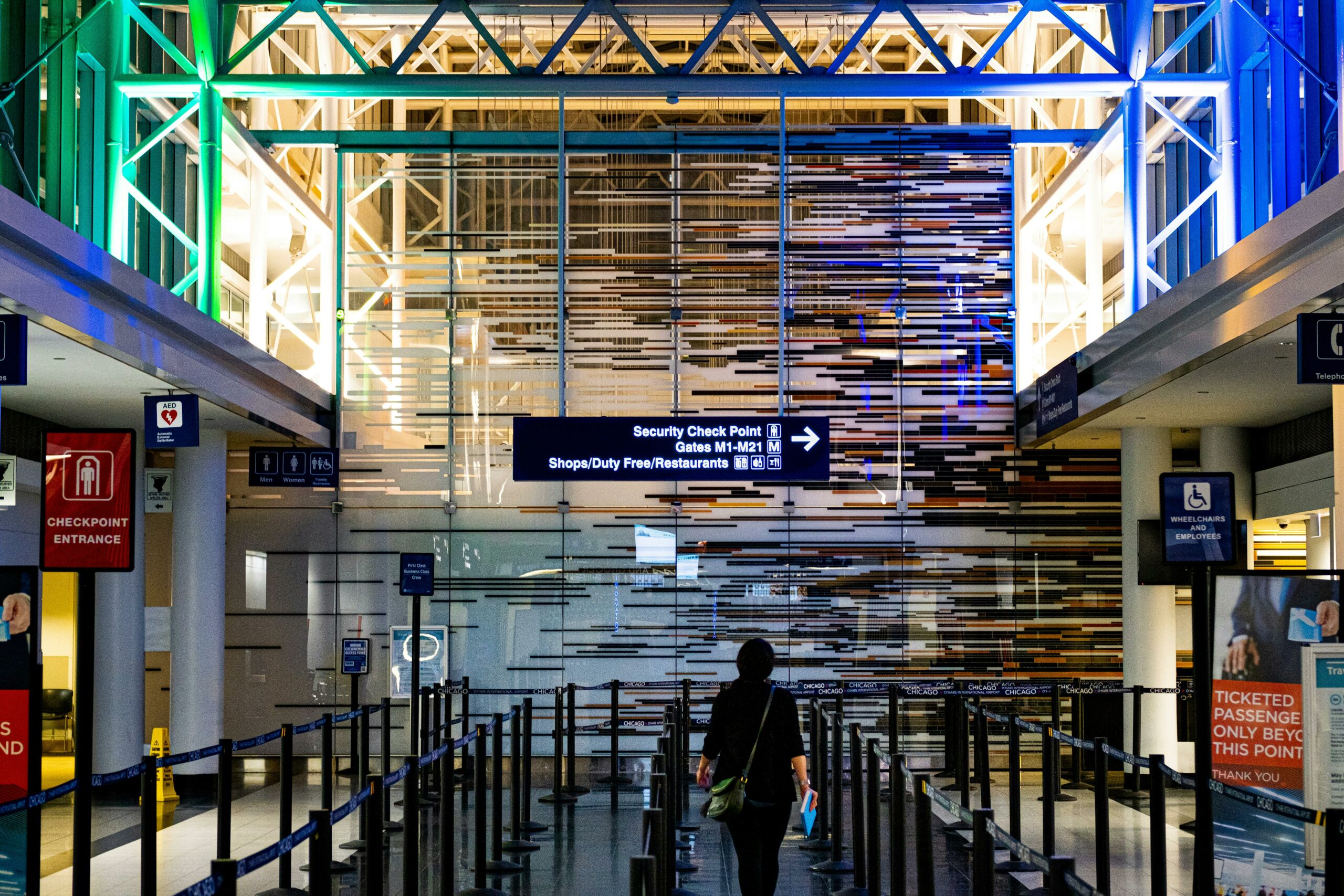The Importance of Accurate
Air Turbulence Forecast for Safe
and Efficient Flights

How important is an accurate air turbulence forecast? Air turbulence is a natural phenomenon that occurs when there is a disturbance in the air. It is a common occurrence in aviation, and it can be caused by a variety of factors such as weather, wind, and other atmospheric conditions. While turbulence is not usually dangerous, it can be uncomfortable for passengers and can cause damage to the aircraft. This is why accurate air turbulence forecasting is essential for aviation safety.
Accurate air turbulence forecasting can help pilots avoid areas of turbulence and make adjustments to their flight paths to ensure a smoother, safer flight. This is especially important for commercial airlines, where passenger comfort and safety are top priorities. With accurate forecasting, pilots can also make better decisions about fuel usage, saving airlines money in the long run.
Related Posts:
Understanding Air Turbulence
How important is it to have an accurate Air Turbulence Forecast? Air turbulence is a common phenomenon that occurs during flights. It is caused by various factors, including clear air turbulence, atmospheric turbulence, and turbulence generation mechanisms.
Clear air turbulence occurs in the absence of any visible clouds or other weather markers. It is caused by changes in the wind speed and direction, which can create areas of turbulence. Atmospheric turbulence, on the other hand, is caused by the interaction between the aircraft and the surrounding air.
Turbulence generation mechanisms include thermal turbulence, mechanical turbulence, and shear turbulence. Thermal turbulence is caused by temperature differences in the air, while mechanical turbulence is caused by the movement of the aircraft through the air. Shear turbulence occurs when there is a sudden change in wind speed or direction.
Understanding the different types of air turbulence is essential for accurate forecasting. By analyzing weather patterns and other factors, meteorologists can predict the likelihood of turbulence occurring during a flight. This information is crucial for pilots and airlines, as it allows them to adjust their flight paths and take other measures to ensure the safety and comfort of passengers.
Significance of Accurate Air Turbulence Forecasting

Accurate turbulence forecasting is crucial for the safety and comfort of passengers and crew on board an aircraft. Turbulence is a natural occurrence that can be caused by a variety of factors, such as weather patterns, jet streams, and mountain waves. It can be unpredictable and can cause discomfort, injury, and even fatalities.
Turbulence prediction and forecasting are important tools for pilots and airlines to ensure a smooth and safe flight. Accurate forecasting can help pilots avoid turbulent areas, adjust their flight path, and make necessary changes to altitude and speed. This can result in a more comfortable and efficient flight, as well as reduce the risk of injuries and damage to the aircraft.
There are various models and technologies used for turbulence forecasting, such as weather radar, satellite data, and computer simulations. These models take into account various factors, such as wind speed and direction, temperature, and humidity, to predict the likelihood and severity of turbulence. However, there are still challenges in achieving accurate forecasting, such as limited data availability and the complex nature of turbulence.
In conclusion, accurate turbulence forecasting is essential for the safety and comfort of passengers and crew on board an aircraft. It is an important tool for pilots and airlines to ensure a smooth and efficient flight. While there are challenges in achieving accurate forecasting, advancements in technology and modeling are continuously improving the accuracy of turbulence forecasts.
Related Posts:
Impacts of Turbulence
Impacts on Passengers
Turbulence can cause discomfort and anxiety to passengers, especially those who are already nervous about flying. In severe cases, turbulence can cause injuries to passengers who are not properly secured in their seats. However, it’s important to note that serious injuries and fatalities due to turbulence are rare.
Impacts on Airlines
Turbulence can also have a significant impact on airlines. In addition to the cost of repairing any damage to the aircraft, turbulence can increase fuel consumption, resulting in higher operating costs for the airline. This can be particularly problematic for airlines that are already struggling financially.
Delta, United, and Southwest Airlines are among the major airlines that have implemented turbulence forecasting systems to help reduce the impact of turbulence on their operations. By accurately predicting areas of turbulence, these airlines are able to adjust their flight paths and altitudes to minimize the impact on passengers and reduce the risk of damage to their aircraft.
Overall, accurate air turbulence forecasting is crucial for both passenger safety and airline operations. By providing accurate and reliable turbulence forecasts, airlines can reduce the impact of turbulence on their operations and improve the overall flying experience for their passengers.
Turbulence Forecasting Techniques
Sophisticated weather models and algorithms are used in the development of forecast systems for air turbulence. These systems use a combination of real-time data, historical weather patterns, and other relevant information to generate accurate forecasts.
One technique used in turbulence forecasting is the use of numerical weather prediction models. These models use mathematical equations to simulate atmospheric conditions and predict turbulence. Another technique is the use of remote sensing technologies, such as radar and lidar, to measure atmospheric conditions and detect turbulence.
Forecast systems also use machine learning algorithms to analyze and interpret large amounts of data from various sources, including weather satellites, aircraft sensors, and ground-based weather stations. These algorithms can identify patterns and trends in the data, which can help improve the accuracy of turbulence forecasts.
Overall, the use of sophisticated weather models, algorithms, and forecast systems has greatly improved the accuracy of turbulence forecasting. With these tools, airlines and pilots can better anticipate and prepare for turbulence, ensuring the safety and comfort of passengers and crew.
Role of Weather Conditions in Turbulence
Air turbulence is caused by a variety of factors, including weather conditions. Understanding the role of weather conditions in turbulence is crucial for accurate air turbulence forecasting.
One of the primary weather conditions that contribute to turbulence is shear. Shear occurs when there is a change in wind speed or direction over a short distance. This can cause turbulence, particularly in the lower atmosphere.
Jet streams are another weather condition that can contribute to turbulence. Jet streams are high-altitude winds that flow from west to east. These winds can cause turbulence when they interact with other air masses.
Convection is another weather condition that can lead to turbulence. Convection occurs when warm air rises and cool air sinks. This can cause vertical motion in the atmosphere, which can lead to turbulence.
Mountain waves are another factor that can contribute to turbulence. These are waves that form when air flows over a mountain range. As the air rises and falls, it can cause turbulence.
Thunderstorms are a well-known cause of turbulence. The updrafts and downdrafts associated with thunderstorms can cause severe turbulence, making it important for pilots to avoid flying near thunderstorms.
Lightning is another weather condition that can be associated with turbulence. Lightning can occur within thunderstorms, and the electrical discharge can cause turbulence in the surrounding air.
Finally, icing is a weather condition that can lead to turbulence. When an aircraft encounters icing conditions, the resulting ice buildup can affect the aerodynamics of the aircraft, leading to turbulence.
Overall, understanding the role of weather conditions in turbulence is critical for accurate air turbulence forecasting. By taking into account these weather conditions, pilots and air traffic controllers can better prepare for and avoid turbulence, ensuring a safer and smoother flight.
Role of Geographical Factors in Turbulence
Geographical factors play a crucial role in the formation of air turbulence. Mountains, for instance, can cause turbulence due to the way they affect the flow of air. As air flows over a mountain, it is forced upward, creating an area of low pressure on the leeward side of the mountain. This can result in strong updrafts and downdrafts, which can lead to turbulence.
In addition to mountains, other geographical features such as valleys, canyons, and coastlines can also contribute to turbulence. Valleys and canyons can cause turbulence by funneling air through narrow spaces, while coastlines can create turbulence by causing changes in wind direction and speed.
Pilots and meteorologists must take into account these geographical factors when forecasting turbulence. By understanding how these factors can contribute to turbulence, they can better predict where and when it is likely to occur, allowing for safer and more efficient flights.
Turbulence Reporting and Regulations
Accurate air turbulence forecasting is critical for the safety of air travel. To ensure that turbulence is reported as accurately as possible, the Federal Aviation Administration (FAA) has established regulations to govern the reporting of turbulence. These regulations are designed to ensure that pilots receive timely and accurate information about turbulence in their flight path.
One of the primary ways that turbulence is reported is through a system of Pilot Reports (PIREPs). PIREPs are reports of weather conditions that are submitted by pilots. These reports are then used by air traffic controllers to provide updated weather information to other pilots in the area.
The FAA has established regulations that require pilots to report any turbulence that they encounter during their flight. These regulations are designed to ensure that pilots have access to the most up-to-date information about turbulence in their flight path.
The National Transportation Safety Board (NTSB) has also recognized the importance of accurate turbulence reporting. The NTSB has recommended that the FAA require all airlines to report turbulence encounters that result in injuries or damage to the aircraft. This recommendation is designed to ensure that accurate information about turbulence is available to all pilots.
Air traffic controllers also play a critical role in ensuring the safety of air travel. Air traffic controllers use a variety of tools and techniques to monitor weather conditions and provide pilots with updates about turbulence in their flight path.
In conclusion, accurate turbulence reporting is critical for the safety of air travel. The FAA, NTSB, and air traffic controllers all play important roles in ensuring that pilots have access to the most up-to-date information about turbulence in their flight path.
Case Studies of Turbulence Events
Accurate air turbulence forecasting is crucial for safe and efficient air travel. This section will cover some case studies of turbulence events to demonstrate the importance of accurate forecasting.
Turbulence Events
Turbulence events can occur due to various reasons such as weather changes, mountain wave turbulence, wake turbulence, etc. These events can cause discomfort to passengers and crew members, and in severe cases, may result in injuries.
In 2019, an Air Canada flight from Vancouver to Sydney encountered severe turbulence over the Pacific Ocean, resulting in injuries to several passengers and crew members. The turbulence was caused by a jet stream that was not accurately forecasted.
Aircraft-Scale Turbulence
Aircraft-scale turbulence is a type of turbulence that occurs due to the interaction between the aircraft and the atmosphere. This type of turbulence can be particularly dangerous for smaller aircraft.
In 2017, a small plane crashed in Colorado due to severe aircraft-scale turbulence. The pilot and passenger were killed in the crash.
Mountain Wave Turbulence
Mountain wave turbulence is a type of turbulence that occurs when air flows over a mountain range. This type of turbulence can be particularly dangerous for aircraft flying at low altitudes.
In 2015, an Airbus A380 flying from Hong Kong to London encountered severe turbulence over the Himalayas. The turbulence was caused by mountain wave turbulence and resulted in injuries to several passengers and crew members.
Accurate air turbulence forecasting can help prevent such incidents and ensure safe air travel.
Future of Air Turbulence Forecasting
Turbulence forecasting has come a long way in recent years. With the help of advanced technology, such as Graphical Turbulence Guidance (GTG) and the Nexrad Turbulence Detection Algorithm, turbulence diagnosis and prediction skill have improved significantly. These tools have made it possible to provide more accurate and timely operational turbulence forecasts.
The National Center for Atmospheric Research (NCAR) has been at the forefront of turbulence forecasting research. They have developed in situ EDR (eddy dissipation rate) measurements to help improve turbulence diagnosis and forecasting. These measurements are used to estimate turbulence intensity and can be used to develop more accurate turbulence models.
Looking ahead, the future of turbulence forecasting is bright. With continued advancements in technology and research, it is likely that we will see even more accurate and reliable turbulence forecasts. This will help airlines and pilots make better decisions and improve safety for passengers and crew.
Overall, the future of turbulence forecasting looks promising. As technology continues to evolve and research advances, we can expect to see even more accurate and reliable forecasts in the years to come.

